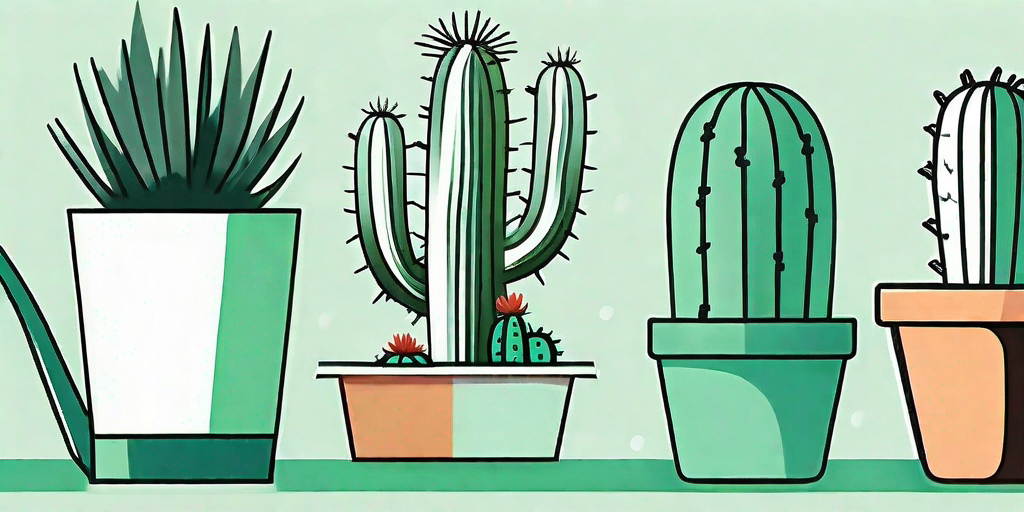
Welcome to the world of cacti, where the plants are as prickly as they are captivating. Whether you're a seasoned green thumb or a novice gardener, this guide is here to help you navigate the sandy terrain of cactus care. So, grab your gardening gloves and let's get started!
Understanding Your Cactus
Before we dive into the nitty-gritty of cactus care, it's important to understand what makes these plants unique. Unlike your average houseplant, cacti are native to arid and semi-arid regions. They are champions of survival, equipped with adaptations that allow them to thrive in harsh conditions.
But don't let their tough exterior fool you. Cacti, like all plants, have their own set of needs and preferences. And while they may not require daily watering or a tropical climate, they do need a certain level of care to flourish.
The Anatomy of a Cactus
Understanding the anatomy of a cactus can help you better cater to its needs. The most distinctive feature of a cactus is its spines, which are modified leaves that protect the plant from predators and help reduce water loss.
Another key feature is the plant's thick, fleshy stem, which stores water and carries out photosynthesis. This is why cacti can survive long periods of drought. But remember, survival is not the same as thriving. So, while your cactus won't keel over if you forget to water it once or twice, it won't be living its best life either.
The Basics of Cactus Care
Now that we've covered the basics of cactus anatomy, let's move on to the care part. The three most important factors to consider are light, water, and soil.
Get these three elements right, and your prickly pal will be as happy as a cactus in the desert. Get them wrong, and well, let's just say you might end up with a less-than-thriving plant on your hands.
Light
Cacti love light. In fact, they need a lot of it to carry out photosynthesis and grow. Most cacti prefer bright, indirect light, although some can tolerate direct sunlight. A south or east-facing window is usually a good spot for a cactus.
But remember, not all cacti are the same. Some species, like the Christmas cactus, prefer less light and more humidity. So, it's always a good idea to research the specific needs of your cactus.
Water
When it comes to watering, less is more. Cacti are drought-tolerant plants, which means they can survive with less water than most other plants. But this doesn't mean they don't need water at all.
A good rule of thumb is to water your cactus when the top inch of soil feels dry. And always remember to use a well-draining soil and pot to prevent waterlogging and root rot.
Soil
Last but not least, let's talk about soil. Cacti prefer a well-draining, sandy soil that mimics their natural desert habitat. You can buy a pre-made cactus mix or make your own by mixing regular potting soil with coarse sand and perlite.
And remember, good drainage is key. A pot with drainage holes is a must to prevent water from sitting at the bottom and causing root rot.
Common Cactus Problems (And How to Solve Them)
Even with the best care, your cactus might run into a few problems. But don't worry, most of these issues are easy to fix once you know what to look for.
Here are some common cactus problems and their solutions.
Overwatering
Overwatering is the number one killer of cacti. Symptoms of overwatering include a soft, mushy stem and discoloration. If you notice these signs, cut back on watering and make sure your pot has good drainage.
If the problem persists, you might need to repot your cactus in fresh, dry soil.
Underwatering
While cacti are drought-tolerant, they can still suffer from underwatering. Symptoms include a shriveled, wrinkled stem and slow growth. If your cactus shows these signs, increase your watering frequency.
But remember, it's always better to underwater than overwater. So, when in doubt, err on the side of caution.
Insufficient Light
Insufficient light can lead to a weak, leggy cactus with pale coloration. If your cactus isn't getting enough light, move it to a brighter location. But remember, gradual changes are best to avoid shocking the plant.
If you don't have a bright enough spot in your home, consider getting a grow light.
Frequently Asked Questions
Still have questions? Don't worry, we've got you covered. Here are some frequently asked questions about cactus care.
How often should I water my cactus?
The frequency of watering depends on the size of your cactus, the size of the pot, the type of soil, and the environment. As a general rule, water your cactus when the top inch of soil feels dry.
Can I grow a cactus from a cutting?
Yes, you can propagate most types of cacti from a cutting. Just make sure to let the cutting dry out for a few days before planting it in soil.
Why is my cactus turning yellow?
A yellow cactus could be a sign of overwatering or insufficient light. Check your watering schedule and the location of your cactus to see if any changes are needed.
Conclusion
And there you have it, the ultimate guide to caring for your cactus. Remember, cacti are tough, resilient plants, but they still need a little TLC to thrive. So, keep these tips in mind, and your prickly pal will be living its best life in no time.
Happy gardening!















